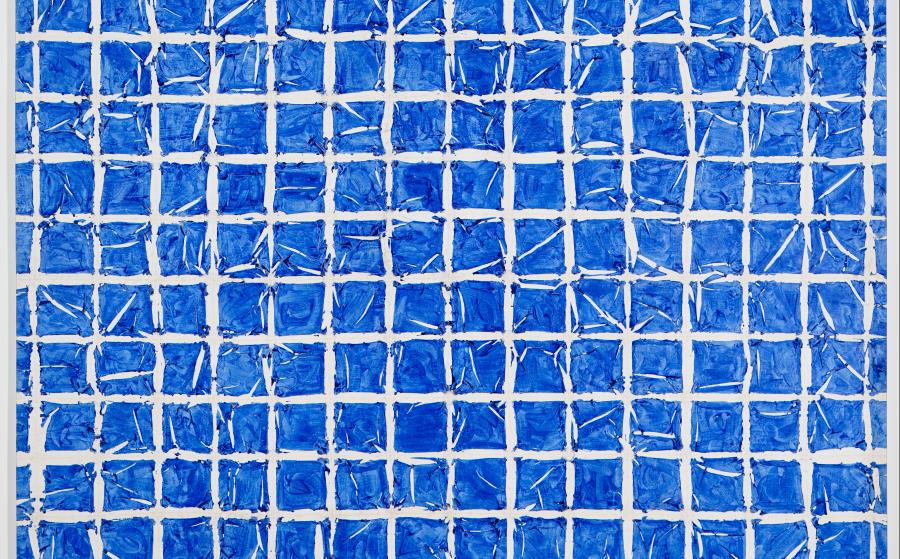The garden of the musée des Beaux-Arts is located in the cloister of what was formerly the abbey of the Dames de Saint-Pierre. It was built in the 17th century and occupied by Benedictine nuns until the French Revolution (1789). The garden was redesigned several times during the 19th century, but today, among the flower beds and under the branches of the trees, it contains a variety of sculptures; there are copies of classical works and also masterpieces by Auguste Rodin and Antoine Bourdelle, as well as contemporary installations like Claudio Parmiggiani’s Terra, which is buried under a tree.
Showcased as part of the 17th Lyon Biennale, the pieces by Nathan Coley and Florian Mermin resonate with both the history and the sculptures of the garden.
The museum is open from wednesday to monday, from 10 am to 6 pm, and friday, from 10h30 am to 6 pm.
Closed Tuesday and national holidays.
Nathan Coley (Born in 1967 in Glasgow, Scotland. Lives and works in Glasgow, Scotland)
Nathan Coley’s works investigate the social and political impact of architecture and public space, and their influence on people’s behaviour and ways of thinking. Whether in installations, light sculptures, photography or video, Coley sees his artistic work as a means of establishing communication between a site and an audience: “Objects can speak in my absence”, he says. Nathan Coley’s work invites the viewer to reflect on, and engage with, issues of identity, ownership and belief. Nathan Coley’s illuminated signs contain words taken from a variety of contexts, including extracts from historical texts, popular songs and snatches of conversation. The words Belief, Mind, Life, Land, Wealth represent the five rights of Islam. Previously exhibited in an Anglican church in Norwich, a shopping centre in London, and the Belfry courtyard of the former town hall in Bruges, Nathan Coley’s texts resonate differently in each venue. In the courtyard of the Musée des Beaux-Arts in Lyon, the title Palace evokes the history of the garden of the Palais Saint-Pierre, formerly the cloister of a royal Benedictine abbey. As the work is deliberately allegorical and ambiguous, the way it is understood will vary according to the position and personal history of each viewer.
Florian Mermin (Born in 1991 in Longjumeau, France. Lives and works in Paris, France)
Florian Mermin’s work is informed by influences from film, literature and philosophy, from Jean Cocteau to Edgar Allan Poe or Jean-Jacques Rousseau. It seeks to establish a dialectic between objects and humans, reality and the imagination, the animate and the inanimate, to blur the boundary between inner and outer. His immersive installations engage all of the five senses to explore the artistic and poetic possibilities of living things. Florian Mermin’s sculptures were created for the courtyard of the Musée des Beaux-Arts de Lyon and make reference to the history of the Palais Saint-Pierre, which in the 19th century was home to the Ecole des Beaux-Arts and its “flower class”, where future designers for the Lyon silk industry were trained. In the cloisters, where various essences were grown to serve as models for the students, a perfume bottle now stands on top of the fountain, its motifs evoking the flowers in Henri Fantin-Latour’s still lifes from the school’s collection. Surrounded by vegetation, the former base of a sculpture by Auguste Rodin has become a funerary monument in memory of the rose growers buried in the old cemetery in Vénissieux, which the artist visited when he was researching the history of roses. The sculpture On n’enterre pas tes ailes sous la pierre is inspired both by the ceramic decorations in the Palais Saint-Pierre and by Terra, a terracotta sphere that the artist Claudio Parmiggiani arranged to have buried in the garden. With their mixture of vitality and disappearance, Florian Mermin’s works are new vanitases, evoking the fleeting and transient nature of existence. With the help of the Ateliers d’Arts Plastiques de la ville d’Évry and the Ateliers Henri Matisse de Vénissieux









